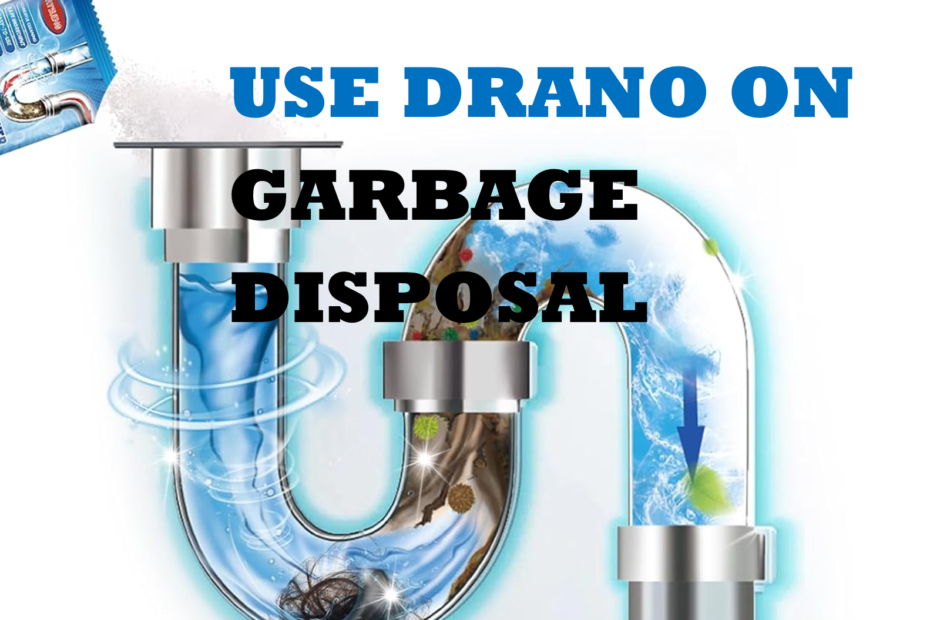Have a blockage and wondering if you can use Drano in a kitchen sink with a garbage disposal? Yes you can but it’s important to use it correctly and cautiously.
Drano products are formulated to clear clogs in drains and there are specific types designed to be safe for garbage disposals.
When using Drano, or any chemical cleaner, you should always use the product as intended and reduce the risk of damage to your plumbing or garbage disposal.
Some Drano products are specifically marketed as safe for use in garbage disposals. Make sure the product you choose is appropriate for use with a garbage disposal to avoid damaging the unit.
Chemical drain cleaners can be harsh and may lead to deterioration of your plumbing over time if used excessively.
It’s generally better to use these products only when necessary and to consider alternative methods of clog removal, such as using a plunger or a plumber’s snake, as first-line solutions.
If you have older pipes or are unsure about the compatibility of chemical cleaners with your plumbing, it may be safer to avoid using Drano and consult a professional plumber for assistance with clogs.
Is It Safe To Put Drano In A Garbage Disposal?
Putting Drano or similar chemical drain cleaners in a garbage disposal requires caution. While some Drano products are formulated to be safe for use in garbage disposals, it’s essential to:
Ensure the Drano product you use explicitly states that it is safe for garbage disposals. Not all drain cleaners are suitable for use with these appliances.
Use Sparingly as frequent use of chemical drain cleaners can lead to corrosion and damage to pipes and the garbage disposal’s internal components. It’s better to use these products only when necessary and as a last resort.
Consider Alternatives before reaching for chemical solutions and try mechanical methods to clear clogs in kitchen sinks. These methods are often effective and do not pose a risk of damage to your disposal system.
For persistent or severe clogs, consulting a professional plumber may be the safest and most effective approach. They can help clear the clog without risking damage to your disposal or pipes.
Can You Put Drano In The Kitchen Sink?
Yes, you can put Drano in the kitchen sink to address clogs. Drano and similar chemical drain cleaners are designed to dissolve common clogs caused by fats, oils, grease, and other organic matter.
Make sure the Drano product you select is suitable for kitchen sinks. Some formulations are designed specifically for certain types of clogs or plumbing systems.
If your kitchen sink is equipped with a garbage disposal, ensure the Drano product is safe for use with disposals and follow specific instructions for disposal systems.
How To Use Drano Max Gel
Using Drano Max Gel to clear a clog in your drain is straightforward, but it’s important to handle the product carefully and follow the instructions to ensure safety and effectiveness.
1. Prepare the Area
- Make sure the area is well-ventilated by opening windows or using a fan.
- Wear protective gloves and eye protection to avoid contact with the skin or eyes, as the product contains strong chemicals.
2. Remove Excess Water
- If there’s standing water in the sink, tub, or shower, remove as much as possible. Drano Max Gel can work through standing water, but it’s more effective if it can reach the clog directly.
3. Pour Drano Max Gel
- Carefully pour the recommended amount of Drano Max Gel down the drain. For a fully clogged drain, Drano typically suggests using half a bottle (up to 16 ounces) for regular-sized drains. For preventive maintenance or minor clogs, less may be sufficient.
4. Wait
- Allow the gel to sit in the drain for the recommended time, usually 15-30 minutes. For tougher clogs, you can leave it up to overnight to allow the product more time to work.
5. Flush with Hot Water
- After waiting, flush the drain with plenty of hot water. This helps to clear out the clog and any residue of the gel from your pipes.
6. Repeat if Necessary
- If the clog persists, you may repeat the treatment once more. However, if the clog still doesn’t clear, it might be too severe for a chemical cleaner, and you may need to try a mechanical method (like a plunger or drain snake) or call a professional plumber.
Safety Tips and Considerations
- Do not use Drano Max Gel with a plunger or in toilets, as it’s not designed for toilet clogs and mixing chemicals can be dangerous.
- Avoid mixing different drain cleaners or chemicals, as this can lead to dangerous reactions.
- Read and follow all safety instructions and warnings on the product label to prevent harm to yourself or damage to your plumbing.
Is Drano The Best Sink Drain Cleaner?
Drano is one of the most well-known and widely used chemical drain cleaners for clearing sink clogs, but whether it’s the “best” depends on several factors.
Drano is effective at dissolving common types of clogs caused by hair, grease, soap scum, and other organic materials. It’s formulated to work quickly, often within 15 to 30 minutes.
Chemical drain cleaners, including Drano, can be harsh on pipes and may cause corrosion over time, especially in older or plastic piping. They can also pose health and safety risks due to their toxic ingredients if not used properly.
Chemical cleaners are not environmentally friendly. They can contribute to pollution in waterways and may harm aquatic life.

